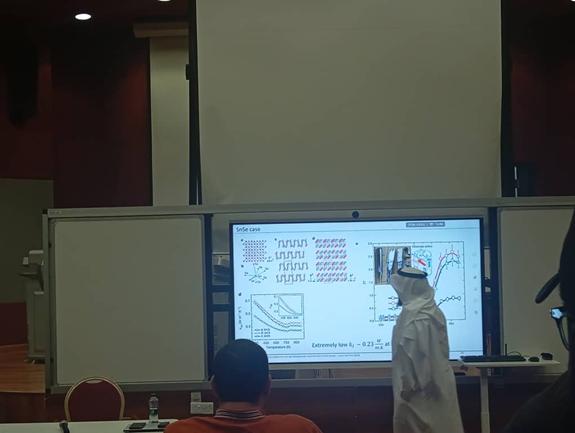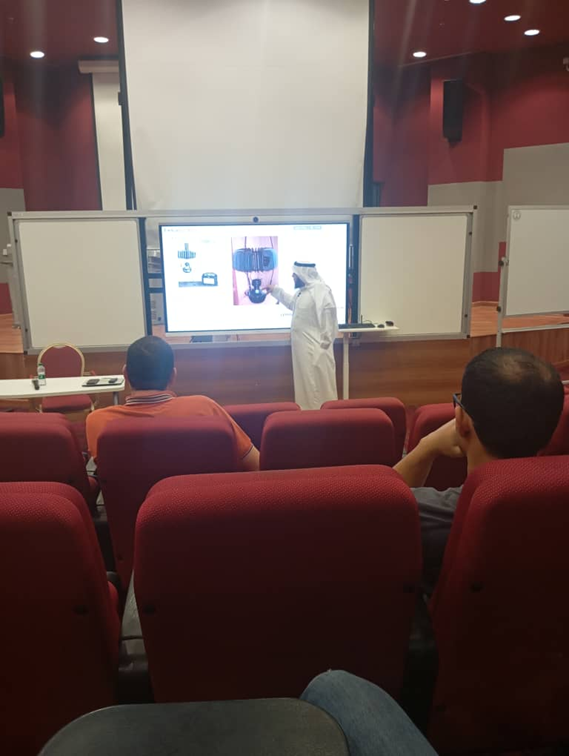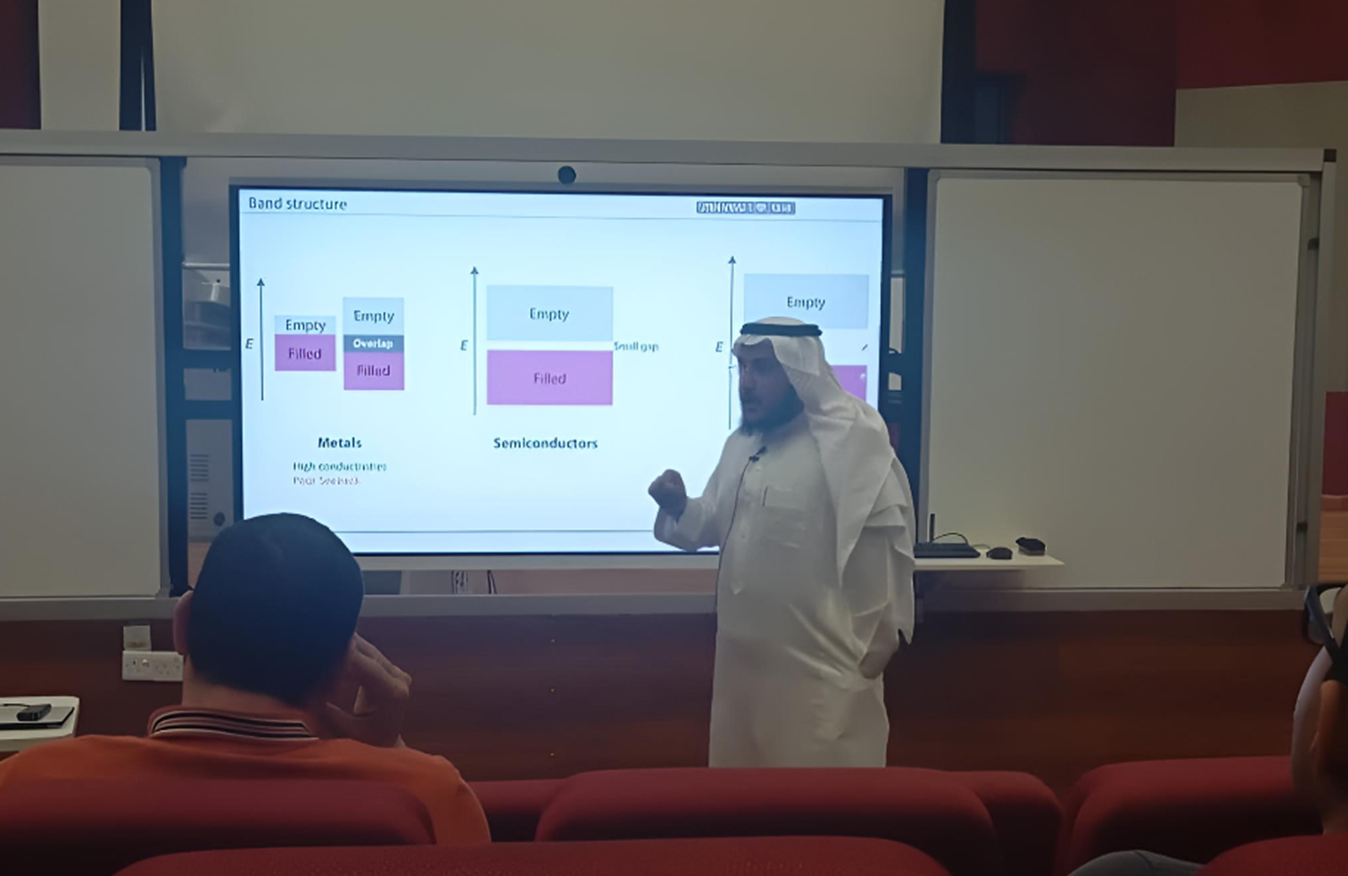News
KFUPM Mechanical Engineering Department Hosts Seminar on “Thermoelectrics: Past and Future”
KFUPM Mechanical Engineering Department Hosts Seminar on “Thermoelectrics: Past and Future”
The Mechanical Engineering Department at King Fahd University of Petroleum & Minerals (KFUPM) successfully hosted a seminar titled “Thermoelectrics, Past and Future” on Wednesday, November 5, 2025, at 1:30 PM. The session was presented by Dr. Muath Mohammed Al Malki, Assistant Professor in the ME Department, whose research focuses on thermoelectric materials, energy conversion, and advanced manufacturing.
Dr. Al Malki earned his Ph.D. in Electrical Science and Engineering from Northwestern University (USA), where he examined the impact of long-term mechanical deformation on thermoelectric transport properties and explored the use of creep-induced dislocations to enhance energy-conversion efficiency.
Seminar Overview
The seminar offered a detailed exploration of thermoelectric principles, material science, and emerging technologies. Dr. Al Malki began by revisiting the pioneering discoveries of Thomas Seebeck (1821) and Jean Peltier, explaining how temperature differences can produce electric voltage, and how this phenomenon underpins modern thermoelectric devices. He described how a typical thermoelectric system operates using N-type and P-type semiconductors, and emphasized the importance of optimizing the dimensionless figure of merit (ZT) — the key performance indicator combining electrical and thermal conductivity with the Seebeck coefficient. The session also examined nanostructuring, grain-boundary engineering, and additive manufacturing as powerful tools to improve thermoelectric efficiency. Dr. Al Malki discussed the transition from early materials such as bismuth telluride to next-generation compounds like tin selenide, which has achieved record-high ZT values above 3.

Key Highlights
- Historical background of thermoelectric discovery and theory.
- Explanation of power-generation and cooling mechanisms in thermoelectric devices.
- Analysis of modern materials and fabrication techniques that enhance energy efficiency.
- Discussion of real-world applications, including NASA’s radioisotope thermoelectric generators (RTGs), automotive waste-heat recovery, and wearable cooling systems.
- Consideration of challenges such as oxidation, material cost, long-term stability, and mechanical deformation under thermal stress.

Reflections and Quotes
Reflecting on his talk, Dr. Al Malki noted:
“I wanted to give some fundamental understanding of thermoelectrics and then move on to recent research in the field.” Attendees commended the session for bridging fundamental physics with practical engineering, describing it as “a comprehensive view of thermoelectrics from its historical origins to its modern applications.”

Conclusion and Future Directions:
The seminar concluded with an engaging discussion on the future of thermoelectric materials and their potential to contribute to cleaner, more efficient energy systems. Participants emphasized the need for collaborative research between academia and industry to overcome the remaining scientific and manufacturing barriers.
Suggested next steps:
- Encourage interdisciplinary projects on thermoelectric material design and modeling.
- Develop partnerships with industrial sectors interested in energy harvesting and waste-heat recovery.
- Offer follow-up workshops for students and researchers on thermoelectric device fabrication and testing.